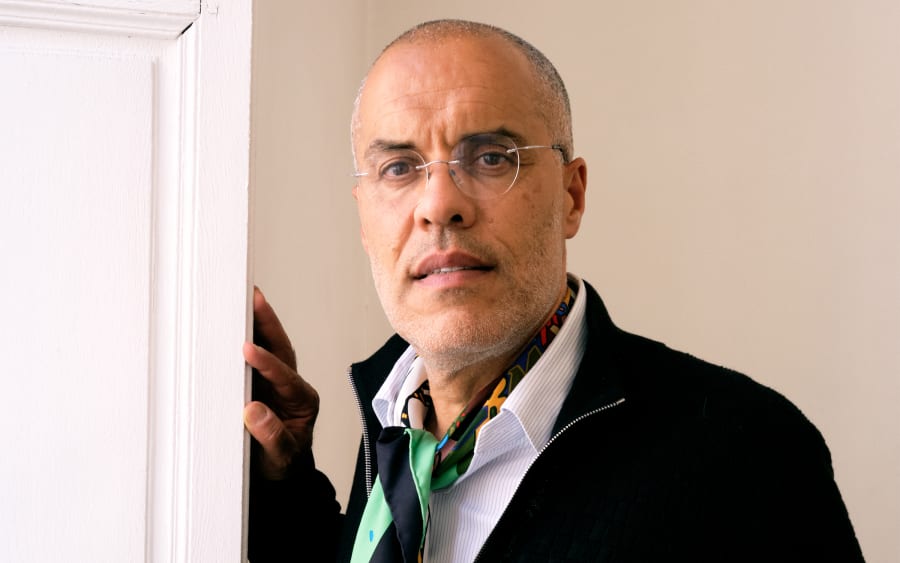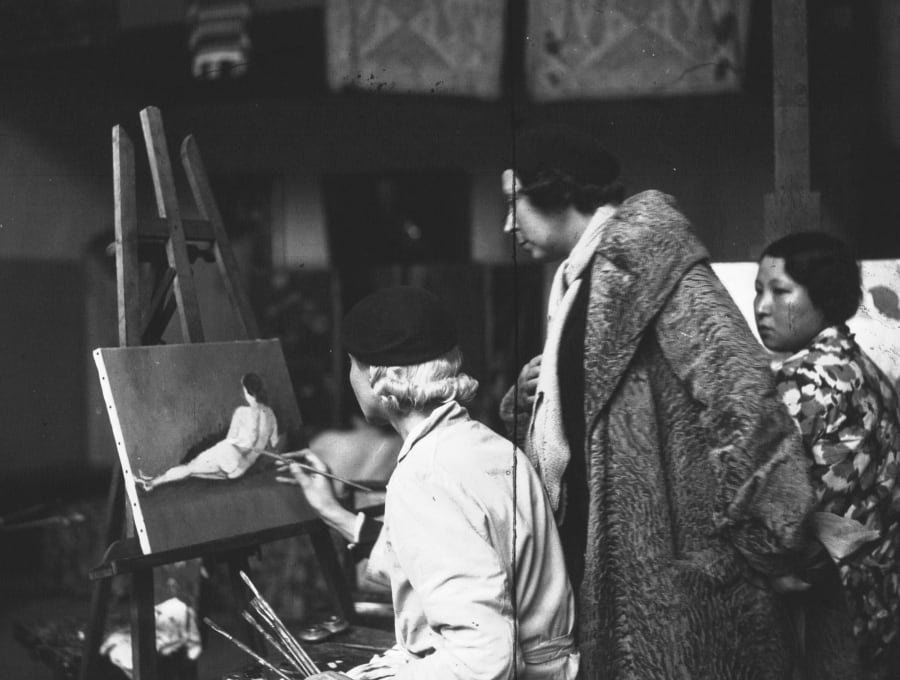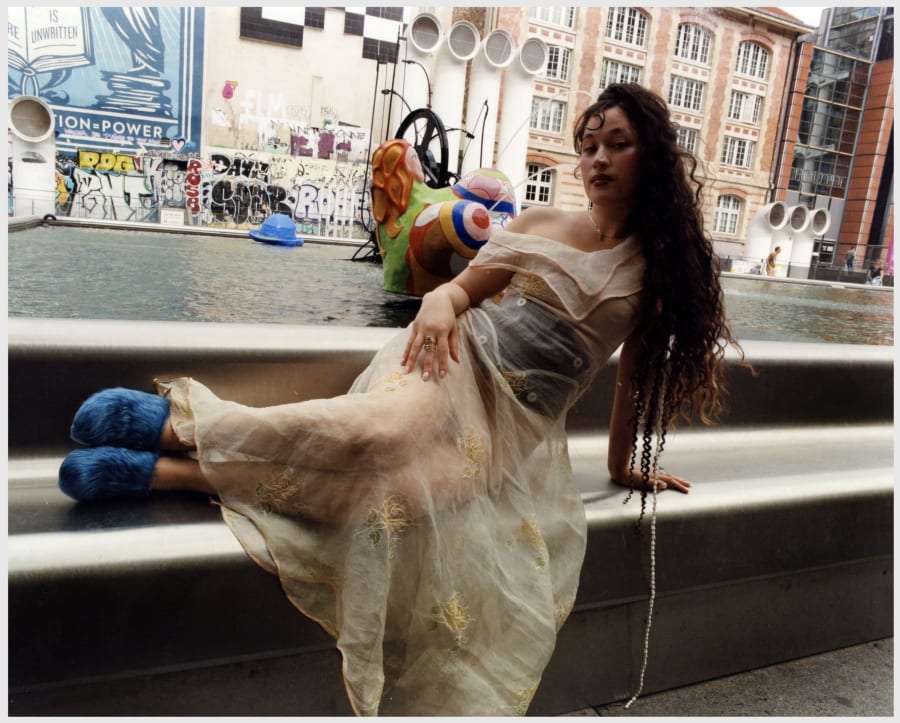The New York-based writer, artist, and collector Kenny Schachter approaches getting dressed with what he calls a ‘religious uniformity.’ For many years, his looks have reliably included a long-sleeved shirt, a short-sleeved shirt, and sometimes a sweater; ASICS or New Balance sneakers with custom-made red and gold shoelaces; and most notably, a pair of vintage Adidas track pants. Since the 1990s, his collection has grown to about 75 pairs. ‘I generally go for unusual combinations or juxtapositions between stripes, pant legs, and classic logos,’ he recently told Art Basel Stories. ‘You could say it’s a peculiar exercise in color theory.’
Schachter has effectively achieved what we’ll refer to as a uniform – an optimized set of garments, so routine and so reliable, that you never have to think about getting dressed. In the context of an art fair, a strenuous week of high visibility and little downtime, the uniform is an excellent strategy for economizing on time and mental energy.
‘It’s really about the confidence you have in an outfit that feels good,’ says London-based art advisor Brandy Carstens, extolling the power that comes with the right choice. ‘Find a uniform that feels great and don’t think about getting dressed ever again.’
What makes the perfect art fair uniform? Guiding principles derive from personal aspirations. For Schachter, the key word is comfort. Carstens agrees, while mentioning ‘polish’ as another important aspect. Her methodology is establishing five outfits that can be worn all season in different combinations. ‘I try to keep it monochrome so that everything can be paired with everything else.’ The choice of brand varies; she recently went to Uniqlo and bought three long-sleeved and three sleeveless shirts, as well as three pairs of slacks. She’s also a fan of vintage and Rachel Comey. More important than the brand is the fit, she adds: ‘The real key to polish is having a great tailor.’
The truth about art fairs is that those who attend them have good reason to put some thought into the way they look. ‘It’s such a personalized business when your name is on everything,’ says dealer Mariane Ibrahim, who pays particular attention to her personal presentation as an extension of the gallery. Engaging in such close proximity with so many potential clients, ‘everything has to be perfectly aligned – your nails, hair, and makeup have to be on point.’ These are gendered factors that make greater demands of women, but Ibrahim prefers the freedom of womenswear: ‘Men are limited, but we have endless possibilities.’ Citing the key words ‘elegant, approachable, and comfortable,’ as well as ‘clean, impeccable, and confident,’ she leans toward matching coordinates, particularly a jacket paired with a skirt to feminize the standard suit; wide-legged pants; and a low heel or flat shoes. A high heel ‘limits mobility,’ she said, so she’s also a fan of sneakers—“not on the first day, but by the third day when my feet are exhausted.”
As a dealer, ‘You cannot compete with your art as the center of attention,’ Ibrahim adds, but subtle flourishes like a bow (‘for the school-teacher look’) or a fine material like cashmere or velvet make a straightforward suit more memorable. Taking care of your hands is important, and manicures are for both men and women. ‘You’re presenting documents with your hands, you can’t hide your fingers.’ Ostentatious displays of brands are a no-go. ‘They will never guess what I’m wearing, unless they know the cut,’ she said. ‘That’s the point – if you know, you know.’
Osman Can Yerebakan, a New York-based journalist, embraces clothing as a means of personal branding. ‘As a freelancer, I represent myself,’ he says, and in the visually crowded environment of an art fair, having an identifiable look is a way to stand out. He fondly recalls being at Dhaka Art Summit and hearing a friend calling his name from a long distance. She said, ‘Of course it could only be you in those shorts!’
Yerebakan breaks his art fair uniform down into two elements: ‘one sexy thing and one conversation starter.’ His go-to variations on these themes include garments with cutouts, slits, keyholes, and other surprise openings; shorts that are sometimes inappropriately short; and his impossibly small, extremely impractical circular Jacquemus wallet that he wears around his neck, which fits little more than a metro card or ID. He’s a big fan of his new Martine Rose sneakers, even though they might be the least comfortable pair he owns, but he feels perfectly validated by the compliments they attract. ‘Putting on something that excites me is a good way to start the fair,’ he said.
Yerebakan’s one practical recommendation is Issey Miyake Pleats Please separates: They’re highly functional, being lightweight, crease-resistant, and versatile for day and night. In the day-to-night vein, Fred Yeries, deputy director of the Hammer Museum in Los Angeles, said that Tod’s Chelsea boots can easily be dressed up or down, noting that they – ‘work out perfectly for a cocktail with jeans, dressed up with a blazer, and they also work with formalwear.’
Where gallerists and advisors are generally constrained by practical and professional concerns, collectors are allowed the most creative leeway when getting dressed for the fair. Paris-based independent art dealer Oscar Villanelle (whose keywords are ‘class, comfortable, and trustworthy’) says collectors should not be judged by what they’re wearing. ‘Someone wearing casual clothes can be a really good collector, while someone well-dressed might be living a fantasy. To assume someone isn’t interesting because they are not well dressed is a mistake.’
The late critic Linda Nochlin once described art-making as ‘a self-consistent language of form’ often found through ‘a long period of individual experimentation’ – a description that aligns with the development of personal style. Clothing is a mode of personal expression like any other, according to Schachter. ‘Having your own voice, whether it’s what you say, what you do, what you make, or how you look is important,’ he says. ‘I’m not naive about the image that I present, and oftentimes I’m dressed inappropriately, to say the least. But in the end, it’s not that calculated. I just like the way it looks, I like the way it feels.’
Art Basel Paris will take place at the Grand Palais from October 18 to 20, 2024. Learn more here.
Janelle Zara is a freelance writer specializing in art and architecture. She is the author of Masters at Work: Becoming an Architect (2019). She currently lives in Los Angeles.
Caption for top image: Illustrations by Damien Florébert Cuypers for Art Basel.
Published on September 25, 2024.


